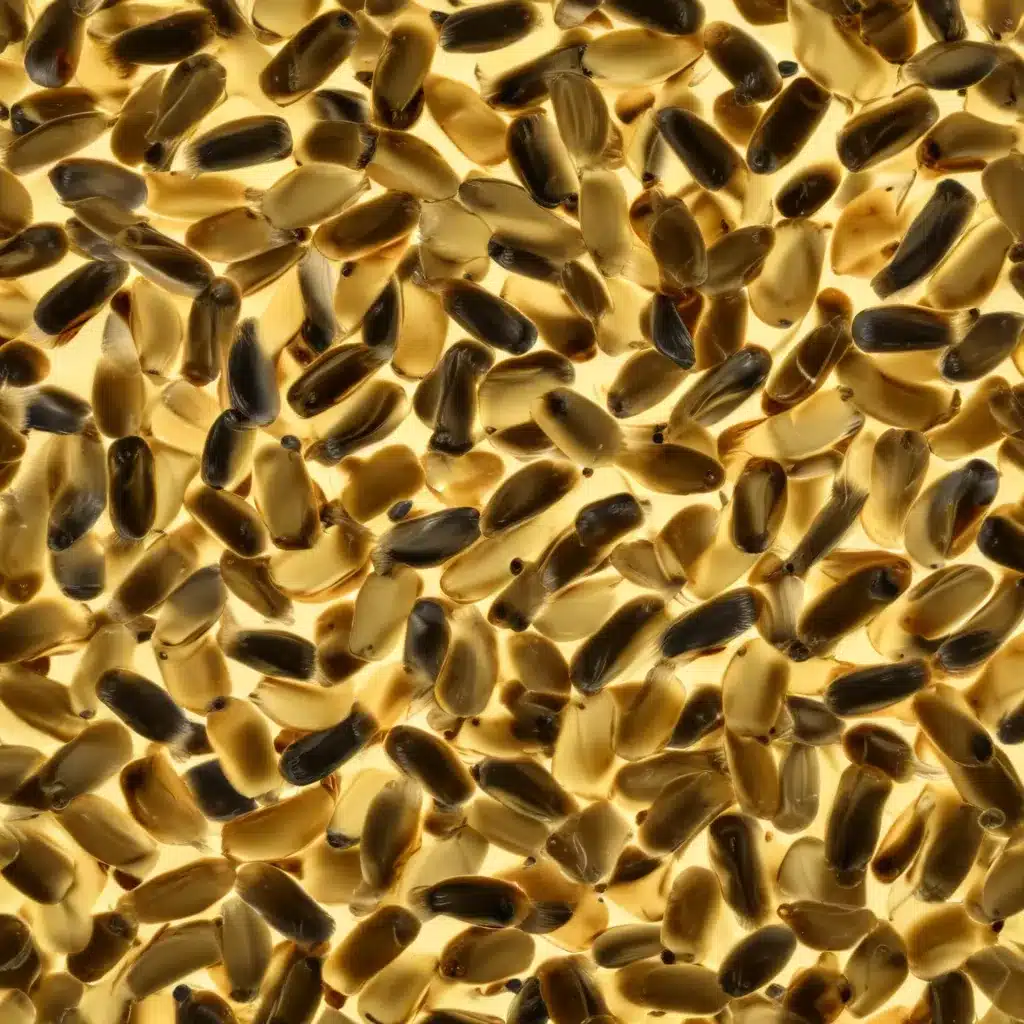
The Versatility of Fish Oil in Edible Films
Fish oil (FO) is a valuable source of bioactive lipids, particularly omega-3 fatty acids, which offer numerous health benefits. From enhancing brain development in children to mitigating the risk of chronic diseases in adults, FO has gained widespread popularity as a functional food ingredient. However, the high content of unsaturated fatty acids in FO also makes it susceptible to oxidation, posing a challenge for its direct incorporation into food products.
One innovative approach to overcome this limitation is the use of edible films containing FO. Edible films act as a protective barrier, shielding the FO-enriched matrix from external factors that can accelerate oxidation. By crafting a double-layered film design, the oxidative stability of FO can be further enhanced. In the first (lower) layer, FO is incorporated, while the second (upper) layer is formulated with active compounds to provide additional protection and functionalities.
Harnessing the Power of Plant Extracts
Among the various active compounds that can be incorporated into the upper layer of the edible film, plant extracts have emerged as a promising choice. Guava (Psidium guajava) leaves, in particular, are a rich source of secondary metabolites with excellent antioxidant and antimicrobial properties, making them an ideal candidate for this application.
Guava leaf extract (GLE) has been widely used in traditional medicine and has gained attention for its potential in preserving the quality and shelf life of food products. By incorporating GLE into the upper layer of the edible film, the film’s ability to protect the FO-containing lower layer can be significantly improved.
Developing a Robust Film-Forming Matrix
The selection of the right film-forming polymers is crucial for the successful implementation of this double-layered edible film concept. Protein-polysaccharide complexes, such as those made from zein (a plant-based protein) and gum arabic (a polysaccharide), have been extensively studied for their suitability in edible film formulations and the encapsulation of FO.
Zein, with its high content of hydrophobic amino acids, can effectively stabilize and protect the FO within the film matrix. Gum arabic, on the other hand, is a versatile emulsifier and stabilizer commonly used in food processing. By combining these two film-forming polymers, the resulting modified zein-gum arabic (MG) complex can provide the necessary mechanical properties, barrier characteristics, and FO stabilization required for the double-layered edible film.
Comprehensive Evaluation of the Double-Layered Edible Film
This study aimed to thoroughly investigate the physical, mechanical, microstructural, thermal, microbiological, and oxidative properties of the double-layered edible film containing FO in the lower layer and GLE in the upper layer. The researchers utilized an array of analytical techniques to assess the performance and functionality of this innovative food packaging solution.
Physical and Mechanical Properties
The thickness, water vapor transmission rate (WVTR), tensile strength, and elongation at break (EAB) of the double-layered films were evaluated. The incorporation of GLE at different levels (1%, 3%, and 5%) influenced these properties, with higher GLE levels resulting in thicker films, increased WVTR, and higher EAB, but lower tensile strength. The optimal balance between these physical and mechanical attributes was achieved with the 1% GLE formulation, which exhibited the desired combination of barrier properties, strength, and flexibility.
Microstructural Analysis
Scanning electron microscopy (SEM) revealed the surface morphology of the double-layered films. The addition of GLE at higher levels (3% and 5%) led to the formation of more cavities and troughs on the film surface, which correlated with the observed changes in WVTR. The uneven surface structure also impacted the mechanical properties, as the increased porosity and disruption of the film matrix contributed to the reduced tensile strength.
Thermal Characteristics
Differential scanning calorimetry (DSC) and thermogravimetric analysis (TGA) were employed to study the thermal behavior of the double-layered films. The results showed that the incorporation of GLE at higher levels (3% and 5%) increased the glass transition temperature (Tg) and melting temperature (Tm) of the films, indicative of enhanced thermal stability. This was attributed to the strengthening of intermolecular interactions between the film-forming polymers (zein and gum arabic) and the phenolic compounds in GLE.
Antimicrobial and Antioxidant Properties
The double-layered films were evaluated for their antimicrobial activity against Bacillus subtilis and Escherichia coli, as well as their ability to inhibit lipid oxidation (measured by peroxide value). The films with higher GLE levels (3% and 5%) exhibited significantly stronger antimicrobial effects against both bacteria, particularly B. subtilis. Additionally, the presence of GLE in the upper layer effectively delayed the onset of lipid oxidation in the FO-containing lower layer, demonstrating the antioxidant benefits of the plant extract.
Microbial Stability during Storage
The total plate counts of the double-layered films were monitored during 28 days of storage. The films with higher GLE levels (3% and 5%) were able to maintain microbial counts below 3 log CFU/g, outperforming the film with 1% GLE and the single-layer FO film. This enhanced microbial stability was attributed to the combined antimicrobial and antioxidant properties of the GLE-enriched upper layer.
Unlocking the Full Potential of Double-Layered Edible Films
The study’s findings highlight the versatility and effectiveness of the double-layered edible film approach in overcoming the challenges associated with FO-enriched food products. By strategically incorporating GLE into the upper layer, the researchers were able to create a multifunctional film that not only protects the FO in the lower layer but also enhances the overall quality, shelf life, and safety of the final product.
The insights gained from this work can inform the development of alternative techniques for incorporating FO into various solid food matrices, such as ready-to-eat sausages, cheeses, candies, and snack bars. By leveraging the unique properties of plant-based active compounds and optimizing the film-forming polymer matrix, food manufacturers can unlock new possibilities for developing innovative, nutritious, and long-lasting FO-enriched food items.
As the demand for functional and healthy food options continues to grow, the advancements in double-layered edible film technology, as demonstrated in this study, offer a promising solution for the successful integration of FO and other valuable bioactive ingredients into a wide range of food products.

